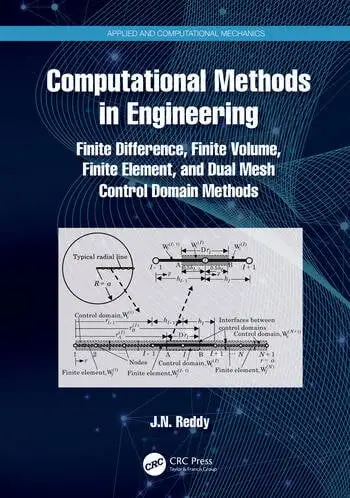Computational Methods in Engineering Finite Difference, Finite Volume
Computational Methods in Engineering: Finite Difference, Finite Volume, Finite Element, and Dual Mesh Control Domain Methods provides readers with the information necessary to choose appropriate numerical methods to solve a variety of engineering problems. Explaining common numerical methods in an accessible yet rigorous manner, the book details the finite element method (FEM), finite volume method (FVM) and importantly, a new numerical approach, dual mesh control domain method (DMCDM).

Numerical methods are crucial to everyday engineering. The book begins by introducing the various methods and their applications, with example problems from a range of engineering disciplines including heat transfer, solid and structural mechanics, and fluid mechanics. It highlights the strengths of FEM, with its systematic procedure and modular steps, and then goes on to explain the uses of FVM. It explains how DMCDM embodies useful parts of both FEM and FVM, particularly in its use of the control domain method and how it can provide a comprehensive computational approach. The final chapters look at ways to use different numerical methods, primarily FEM and DMCDM, to solve typical problems of bending of beams, axisymmetric circular plates, and other nonlinear problems.
This book is a useful guide to numerical methods for professionals and students in all areas of engineering and engineering mathematics.
Size: 21 MB
Download
*
Computational Methods in Engineering: Finite Difference, Finite Volume, Finite Element, and Dual Mesh Control Domain Methods provides readers with the information necessary to choose appropriate numerical methods to solve a variety of engineering problems. Explaining common numerical methods in an accessible yet rigorous manner, the book details the finite element method (FEM), finite volume method (FVM) and importantly, a new numerical approach, dual mesh control domain method (DMCDM).

Numerical methods are crucial to everyday engineering. The book begins by introducing the various methods and their applications, with example problems from a range of engineering disciplines including heat transfer, solid and structural mechanics, and fluid mechanics. It highlights the strengths of FEM, with its systematic procedure and modular steps, and then goes on to explain the uses of FVM. It explains how DMCDM embodies useful parts of both FEM and FVM, particularly in its use of the control domain method and how it can provide a comprehensive computational approach. The final chapters look at ways to use different numerical methods, primarily FEM and DMCDM, to solve typical problems of bending of beams, axisymmetric circular plates, and other nonlinear problems.
This book is a useful guide to numerical methods for professionals and students in all areas of engineering and engineering mathematics.
Size: 21 MB
Download
*